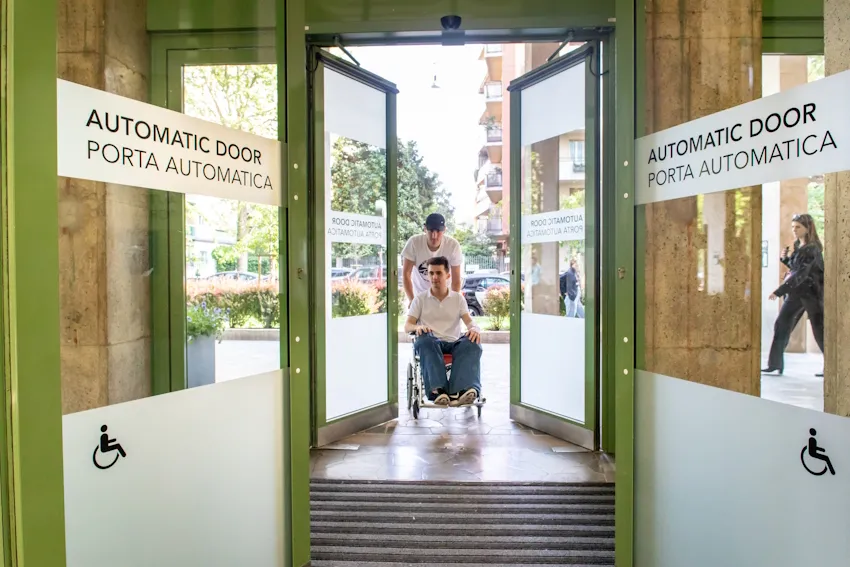
A Campus That Is Increasingly Open to All
An increasingly inclusive university must also be a place ready to welcome disability. In the case of Bocconi, that means being truly accessible for the 368 students with disabilities and specific learning disorders (2022 data, Sustainability Report) who attend the University. Their numbers are growing (+87% compared to 2020), in testament to the continuous work done by the University in this area.
On a practical level, many initiatives have been launched to break down all types of barriers, and since 2022 they have been coordinated by the Inclusion Service.
In terms of architectural barriers, the work involved the creation of a radio beacon system to improve accessibility for people with visual impairments – which in the future will be completed with tactile paths on the pavement – and the construction of the telescopic staircase for the foyer of the building at Via Sarfatti 25, which will be joined by a similar staircase for access to the Zappa and Notari classrooms (ground floor of the same building). The furnishings of the University's classrooms have also been revised, and now include 100 dedicated desks and indications in Braille.
In addition, the seven residence halls are now fitted with 35 studios and single rooms available for people with disabilities, as well as 40 apartments with specific bathrooms.
Finally, future plans for the campus also include the implementation of a transport service for students, staff or faculty with disabilities and access to the campus for guide dogs.
On the human resources front, a dedicated training module for the faculty on inclusion – with a specific focus on disability – has been implemented, and the effort has also been expanded for Bocconi staff with specific courses on the same topics.
Finally, concerning digital accessibility, many steps have been taken to make information and services usable, including a guide for the creation of documents suitable for automatic readers, software to improve accessibility on Bocconi websites and for the automatic conversion of difficult-to-read documents, as well as the implementation in Blackboard of tools for measuring and creating accessible teaching material. Added to these is software for automatic speech subtitling and the digitization of texts for students.
"Each of these initiatives aims to enable anyone who studies or works at universities to do so in conditions of equal opportunity," explains Aida Riolo, Head of the Inclusion Service. "Let's remember that a person with a disability is first and foremost a person whose disability will be greater or lesser depending on the extent to which their environment is free of obstacles."